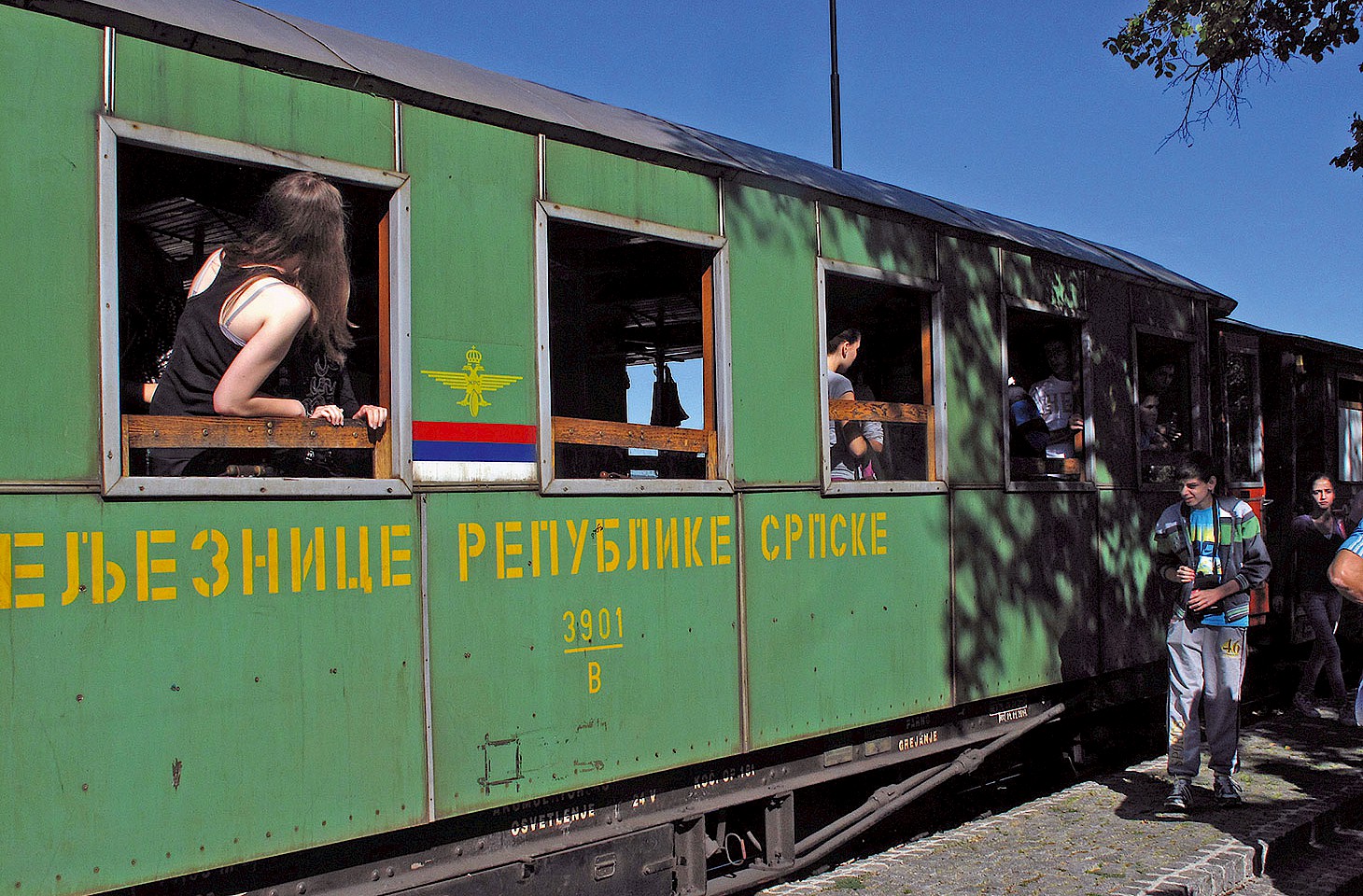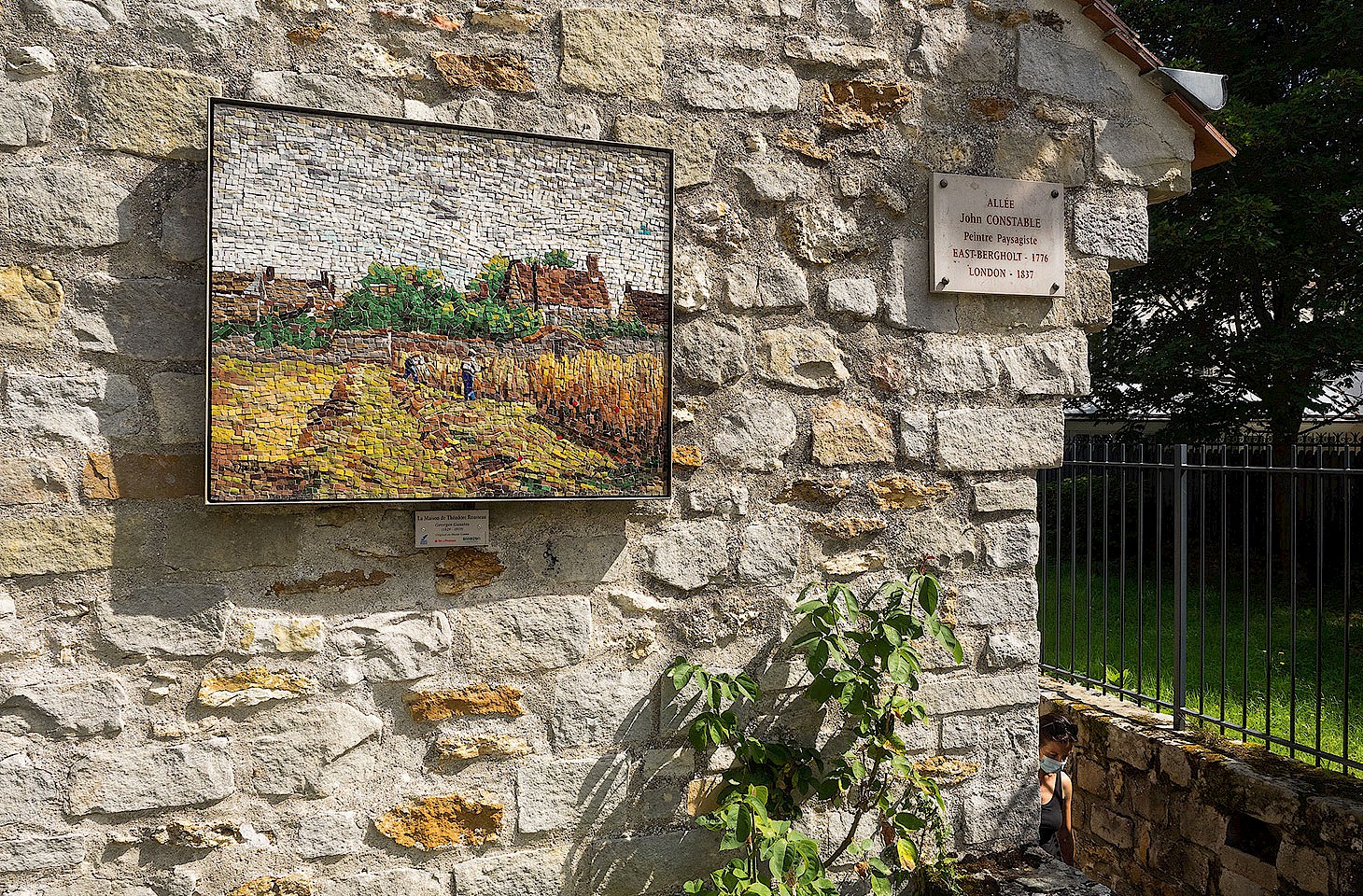Dear fellow travellers
Where were we? Ah, yes.... Brussels. Standing by the crib in the Grand Place. That was a day or two before Christmas. Since then you've eaten turkey (or carp possibly), perhaps been to church, perhaps not. And we marked Christmas Day (as we always do) with a simple lunch in a Russian café. Siberian pelmeni, filled with potato and mushrooms. And a glass of Kagor for desert. We are creatures of habit.
As is Marc-Vivien. Not his real name. But this young Cameroonian man has called himself Marc-Vivien since arriving in Brussels five years ago. He styles himself after a famous Cameroonian footballer, Marc-Vivien Foé, a talented midfielder who in 2003 died on the pitch when playing for his country in an international match in France. And that was the moment when a football-crazy lad in Cameroon, then aged just ten, decided he would head to Europe and seek soccer stardom. Three years later he arrived in Brussels. Handlers along the way assured him that he would have no problem getting a place in the youth squad of a leading Belgian football team. He looked forward to cruising the boulevards of Brussels in a big car.
Those were the days of dreams. And now there is reality. Marc-Vivien sorts rubbish and washes dishes in Brussels. Day-in, day-out. Even over Christmas.
There are thousands of Marc-Viviens all over Europe. These are young men and women who missed out on the turkey and carp, and certainly had no pelmeni or Kagor over Christmas. Belgium in particular receives a large number of unaccompanied child migrants - over 3000 during 2011. Many of these kids end up in Brussels.
In most European capitals these young migrants make little imprint on the cultural life of the city. But as we said last week, when we wrote on the matter of Christmas markets, Brussels does thing differently. The Belgian capital has a radical demeanour and a willingness to engage with gritty, difficult topics. The unconventional inflects everyday life in Brussels. This is a city where cartoons have edged into the cultural mainstream. Tintin, the Smurfs, Gaston Lagaffe (with his depressed seagull and hyperactive cat) were all conceived in Brussels.
Tintin is the heart of Brussels. As is Marc-Vivien, the starry-eyed lad from Cameroon. Many of the young men and women who came to Belgium as children or young teenagers were trafficked by unscrupulous middlemen who promised them new lives in a land of milk and honey. The experience of eight such migrants is currently told in a special exhibition at the Belvue Museum. The past really is another country for Maryska, Raza, Imad, Ibrahim, Sabo, Dinesh, Benjamin and Jobob. They came to Brussels alone, leaving fragments of their past in the Balkans, sub-Saharan Africa, the Middle East or Asia.
The Belvue has a knack of running exhibitions that make you think. Two separate exhibitions last year challenged visitors to take a new look at Brussels. One of those two shows, called Facing Brussels, dived under the skin of a city that is at once sullen and genial, chic and shabby. The Past is Another Country picks up the theme with a perspective on Brussels through the eyes of unaccompanied child migrants who have grown up in the city. Mon Hier est Ailleurs (The Past is Another Country) is open daily except Mondays until 29 January.
Yes, Brussels certainly does things differently. The city provokes in a way that few other European capitals do. We like it for its idiosyncratic take on life and for its quirky affectations. We like it for its feast of art nouveau design. We like it for its cultural, ethnic and religious mix. We like it for its extraordinary galaxy of museums and galleries. This winter, apart from the exhibition on child migrants at the Belvue, Brussels boasts special exhibitions on Simenon, concrete facades, chromolithography and the history of the now-defunct Belgian airline Sabena. Back in the 1920s, it was this Belgian air carrier that pioneered air routes from western Europe to central Africa. It created links to Brussels that still give the Belgian capital its own peculiar flavour. It inspired millions of young Africans, like Marc-Vivien, who flock to a city where they think the streets might well be paved with gold.
Nicky Gardner and Susanne Kries
(editors, hidden europe magazine)




